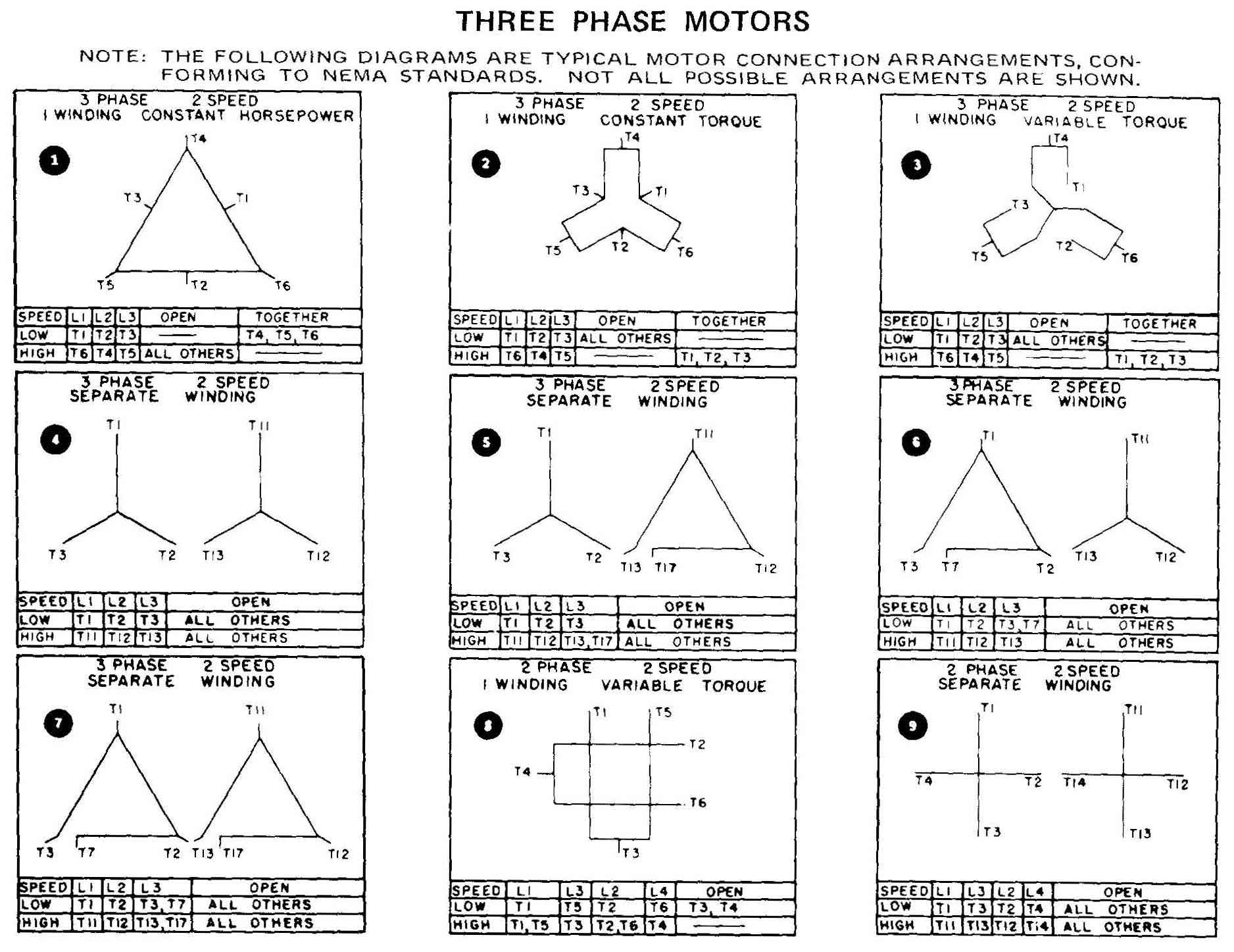AMAZON multi-meters discounts AMAZON oscilloscope discounts
Delta- and wye-connected motors may have numerous sets of coils so that they can be wired to operate at two separate voltages. The extra windings are connected in series for the motor to operate at the higher voltage, and they are connected in parallel for the lower voltage. The higher voltage in these applications is usually 440 or 480 volts, while the low voltage is usually 208 or 220 volts. The actual voltage will be specified on the motor’s nameplate.
The dual-voltage option provides a larger variety of choices when the motor must be connected to power distribution systems. Note that it's important to balance the loads on the power distribution system and not overload any of the transformers. When the motors are connected to operate at higher voltages, their current draw is reduced by half. The motor will use the same amount of wattage in both configurations, but smaller-gauge wire and smaller contacts and switch gears can be used throughout the circuit when the motor is connected to the higher voltage.
The lower voltage is also useful when no high voltage is available in the area of the factory where the motor must be installed. The dual-voltage motor can be connected for the lower voltage and a savings can be realized by not having to install extra-long power cables to reach the remote source.
Fig. 1 shows a set of diagrams and tables that indicates the proper connections for the motor to operate at both high and low voltage. The diagrams are presented as wiring diagrams with the numbers on the terminal leads. Note that the motor can be connected as either a delta motor or a wye motor, which will affect its starting torque and LRA characteristics, so high- and low- voltage diagrams are presented for each of these types of motors.

Above: Fig. 1 (a) Diagram of a wye-connected motor for high and low
voltages. (a) Wye-connected motor for 480 V and 208 V. (b) Diagram of
a delta-connected motor for high and low voltages.
Fig. 1a shows a wye-connected motor wired for high voltage and for low voltage. Notice that the six coils are con figured as three sets of parallel coils when the motor is connected for low voltage and as a series circuit when they are connected for high voltage. Since all the coils are used in the configurations for high and low voltage, the motor will have the same amount of torque and horsepower in both cases connections can be made to allow the motor to provide constant torque regardless of the speed at which it's operating.
Fig. 2 shows a series of diagrams that provides methods of connecting these multi-lead motors for a change of speed. These diagrams allow one to select the torque and horsepower requirements for your application. From this figure notice that the diagrams are listed in terms of the number of windings the motor has. The first group of diagrams (1, 2, and 3) shows diagrams for two-speed motors with one winding. These motors will have six leads brought out of the motor for the field connections that are listed at the bottom of each diagram. Diagram I is provided to allow the motor to operate at constant horsepower, diagram 2 is pro. vided to allow the motor to operate with a constant torque. and diagram 3 is provided to allow the motor to operate with variable torque.

Above: Fig. 2: Two-speed diagrams for six-lead and twelve-lead motors.
Click here for full-sized image.
The second group of diagrams (4, 5, 6, and 7) shows diagrams for two-speed motors with two separate windings. These motors have 12 leads brought out to make two separate windings for field connections. Diagram 4 shows both windings connected as a wye, and diagram 5 shows the first winding connected as a wye. and the second winding connected as a delta. Diagram 6 shows the first winding connected as a delta and the second winding connected as a wye. Diagram 7 shows both windings connected as a delta.